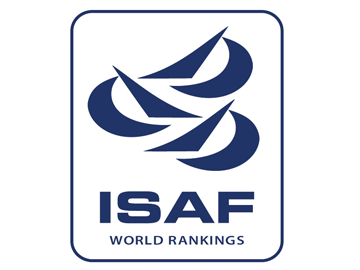 |
The Official
|
| www.sailing.org |
27 December 2001, 02:15 pm
illbruck Leads

Volvo Ocean Race
Sydney
Overall race leaders illbruck have edged ahead of Tyco to lead the fleet down the East Coast of Australia. However, that lead is a slender one and all the boats are sailing within sight of each other.
Just one mile separated first from last place as the fleet entered their first night at sea, beating into a strengthening wind. This gap has increased as the east/west split increased to five miles between illbruck, holding the westerly position, and Tyco the easterly.
Low pressure to the south is extending a trough over the racecourse bringing moderate, mainly southwest winds. As the low moves away high pressure from the Great Australian Bight is pushing east, continuing mainly west to south westerly winds for the next 24 hours.
Through the Bass Straits the wind is strong at 25 to 30 knots but further north the wind is lighter at 15 to 20 although it may be temporarily higher and variable in direction. Rain radar shows a number of heavy rainstorms, which are likely to swing the wind and increase it depending on which side of the squall the boats pass. Close to the coast the wind should be lighter, increasing as the distance away from the land also increases.
Tactically the fleet has to balance the stronger, more backed wind offshore combined with the favourable current, against a lighter but more favourably veered wind close into the coast. There are also eddies in the current to be looked for to help or hinder along the way.
Offshore is not all good as the favourable East Australian Current, running at a couple of knots, will generate short steep seas as it flows against the wind. This will slow the yachts, negating some of the advantage that the current gives and it will also increases the chance of damage to yacht and crew as they crash from one wave top to the next.
The whole fleet is straddling the 200m depth contour. Maximum current is to be expected close to this contour and the navigators will be studying the satellite pictures of the sea water temperature to estimate just where this maximum current is. Unsurprisingly, John Kostecki has positioned illbruck just on the shallow side of the 200m contour where historically the strongest current is likely to be found. In addition, by being the most westerly yacht he is also holding a windward advantage, or leverage, over his more easterly rivals - unless the wind swings to the southeast.
With such a tight fleet it is expected that they will remain close together with no change from following the most direct route. However, there is a difference of opinion in the weather forecasts (between the local Australian forecasts and the UK met office) as the high pressure moves over the racecourse late on the 27th to be replaced by low pressure on the 28th. The wind is likely to become more southerly, possibly going to the southeast for a while. The fleet needs to stay together so that they enter the Hobart pit stop close together to avoid it becoming a big gate, with proportionally huge gains or losses to be made from just small differences in finish times.
© 2013 Copyright ISAF/ISAF UK Ltd. All Rights Reserved Privacy & Cookies delivered by Sotic powered by OpenText WSM

















.png)